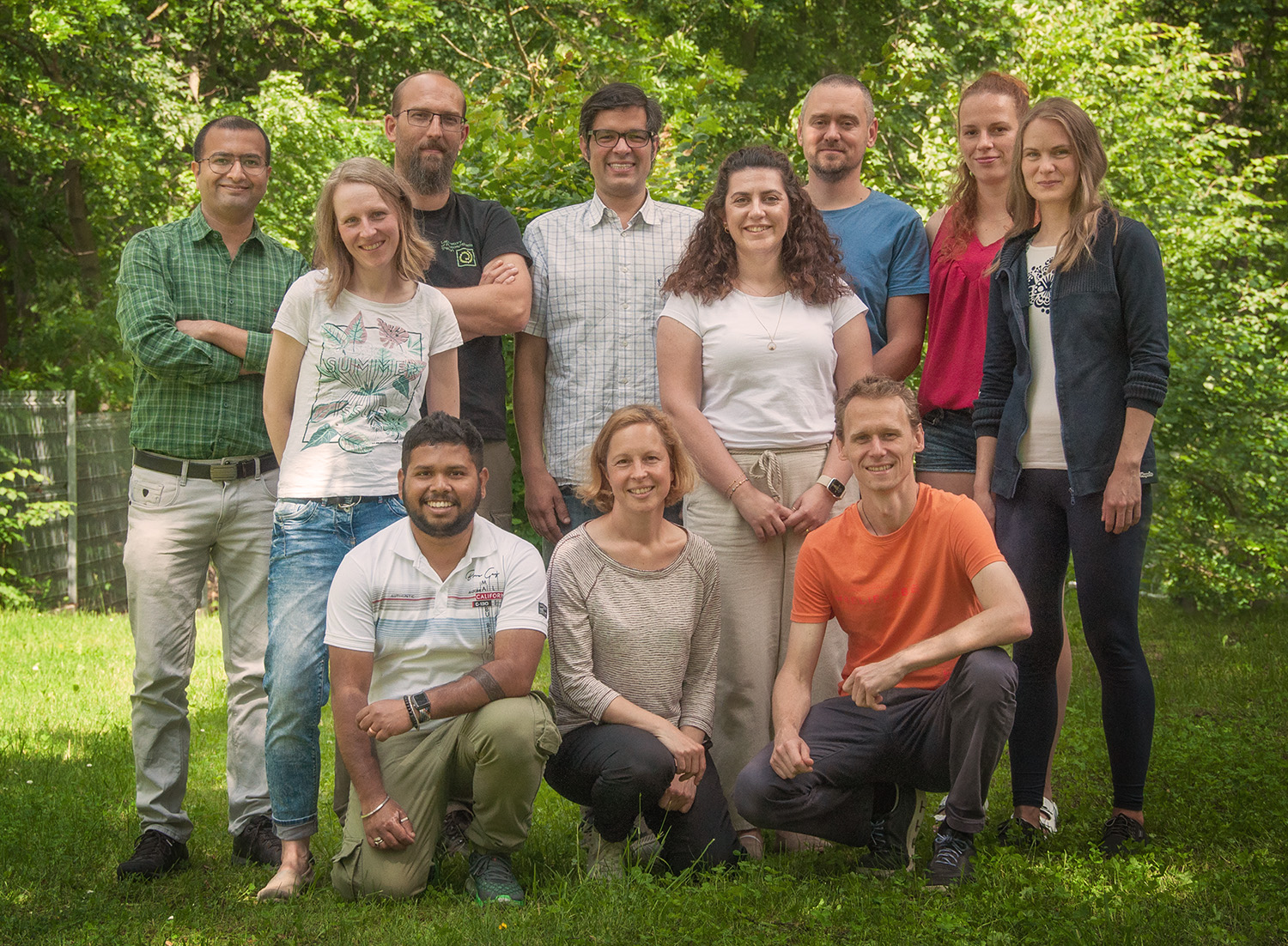Laboratory of Photosynthesis
Jan Janouškovec´s group
Algal evolution and ecology
Algal Evolution and Ecology
|
|
|
Group members from bottom right to left (year 2024): Jan Janouškovec, Eva Horáková, Vishma Pratap Sur, Nikola Hloušková, Lucie Fraitová, Jan Michálek, Ayca Fulya Üstüntanir Dede, James Jason Valdes, Martin Lukeš, Daniela Ewe, Chetan Paliwal
|
We study cell biology and evolution in microalgae and heterotrophic protists. The group is led jointly by Jan Janouškovec and Eva Horáková.
Phosphonate metabolism
We study the biosynthesis and breakdown of phosphonates in eukaryotes. This research examines the cellular role of phosphonates in the model species Tetrahymena thermophila and their utilization by phytoplankton, fungi and other eukaryotes.
Photosynthetic pigments
Our priority in this area is to understand chlorophyll breakdown in microalgae by using Chlamydomonas reinhardtii as a model organism. We are also investigating new players in fucoxanthin biosynthesis in the diatom Phaeodactylum tricornutum.
Protistan hormones
This project explores the cellular roles of peptide and amine hormones in Tetrahymena thermophila to understand their ancestral function in single celled protists, as a potential precursor to their involvement in endocrine signaling.
Dinoflagellate bioluminescence
We are studying the molecular basis of bioluminescence and luciferin biosynthesis in the cultures of photosynthetic and heterotrophic dinoflagellates.
Evolution of parasites and phytoplankton
This work involves genomics on uncultured marine protists that parasitise on copepods and other protists. We are also interested in reconstructing phytoplankton (primarily dinoflagellate) evolution by analysis of next generation sequence data.
Chlorophagy
In this project we try to understand the relationship between autophagy and photosynthesis in the microalga Haematococcus pluvialis. Using a proteomic approach, we aim to uncover the mechanism of chloroplast degradation under stress conditions and link it to astaxanthin pigment production.
